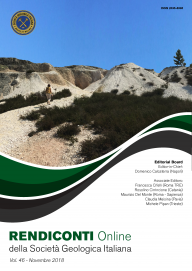
Ground Source Heat Pumps in Aosta Valley (NW Italy): assessment of existing systems and planning tools for future installations
Alessandro Casasso (a), Simone Della Valentina (a), Andrea Filippo Di Feo (a), Pietro Capodaglio (b), Raoul Cavorsin (c), Rosalia Guglielminotti (d) & Rajandrea Sethi (a)
(a) Department of Environment, Land and Infrastructure Engineering, (DIATI), Politecnico di Torino, corso Duca degli Abruzzi 24, 10129, Turin, Italy.
(b) ARPA Valle d'Aosta, località Grande Charrière 44, 11020, Saint-Cristophe (AO), Italy.
(c) Regione Valle d'Aosta - Assessorato Attività Produttive, Energia, Politiche del lavoro e Ambiente, piazza della Repubblica 15, 11100, Aosta, Italy.
(d) COA Finaosta, via B. Festaz 22, 11100, Aosta, Italy.
Corresponding author e-mail: alessandro.casasso@polito.it.
Volume: 46/2018
Pages: 59-66
Abstract
The economic viability of shallow geothermal systems with Borehole Heat Exchangers (BHEs) strongly depends on the thermal load which can be efficiently and sustainably exchanged with the ground. This quantity is usually defined as geothermal potential and, as reported in literature, it mostly depends on the thermal conductivity and the undisturbed temperatures of the ground.
The GRETA Project funded by the EU Interreg Program Alpine Space aims to produce maps of the geothermal potential in pilot areas across the Alpine territory to identify the most suitable areas for shallow geothermal installations. This paper presents the case study of the Aosta Valley, where the recently developed G.POT (Geothermal POTential) method was adopted. It describes the data sources used
and the assumptions made to derive input parameters (ground thermal properties, usage profile, etc.). In addition, the results of a survey on existing geothermal installations are presented.
Keywords
shallow geothermal energy, ground source heat pumps, geothermal potential, borehole heat exchanger, Aosta Valley.
Get Full Text